Welcome to another exciting post on our blog. Today, we're taking you on a virtual trip to the tropical paradise of Oahu, one of Hawaii's most vibrant islands. But we're focusing on a specific part of this island paradise – the windward side of Oahu.
Now, you might be thinking, ‘What is the windward side of Oahu?' That's a great question and precisely what we're here to explore. Known for its lush landscapes, breathtaking mountains, and pristine beaches, the windward side of Oahu is a treasure trove of natural beauty and cultural richness that offers a uniquely Hawaiian experience.
So whether you're planning your next Hawaiian vacation or simply dreaming of the tropical breeze, join us as we delve into the wonders of the windward side of Oahu. Let's set sail to the east, shall we?
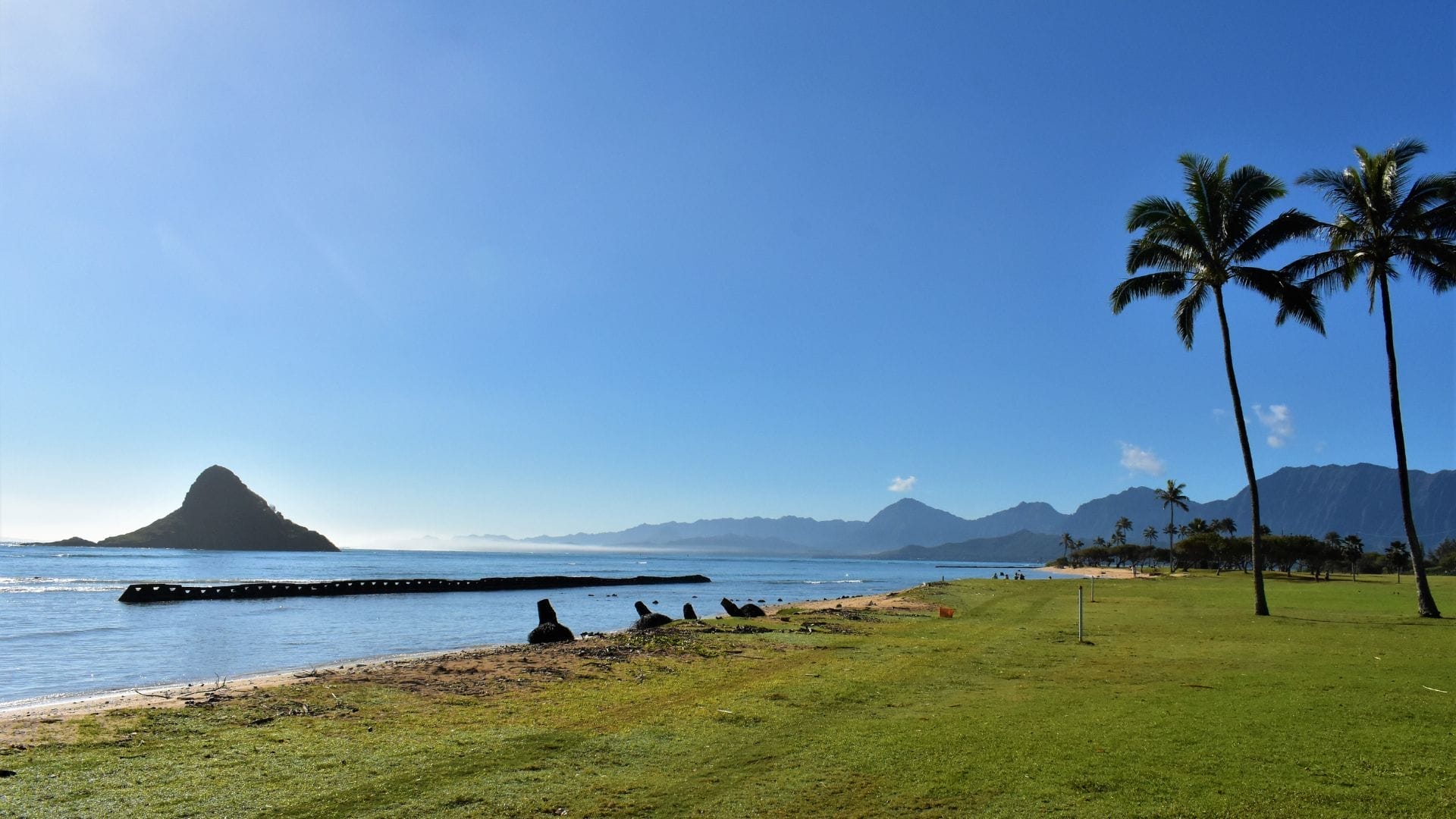
Windward Side of Oahu - Overview
The windward side of Oahu, also known as the East Shore, is a verdant paradise that offers a serene contrast to the bustling city life of Honolulu and Waikiki. Nestled against the majestic Ko'olau Range, this region is just a 30-minute drive from the city center, making it a perfect getaway for those seeking tranquility amidst stunning natural beauty.
This region is aptly named 'windward' as it receives the benefit of cool, trade-wind breezes, leading to frequent, gentle rain showers that nourish its lush landscapes. The result is a tropical haven of emerald mountains, cascading waterfalls, and enchanting rainforests.
One of the highlights of the windward coast is Kailua Beach Park, known for its powdery white sand and turquoise waters.
Other must-see attractions include the tranquil Lanikai Beach, the picturesque Waimanalo Beach, and the breathtaking Hoomaluhia Botanical Gardens.
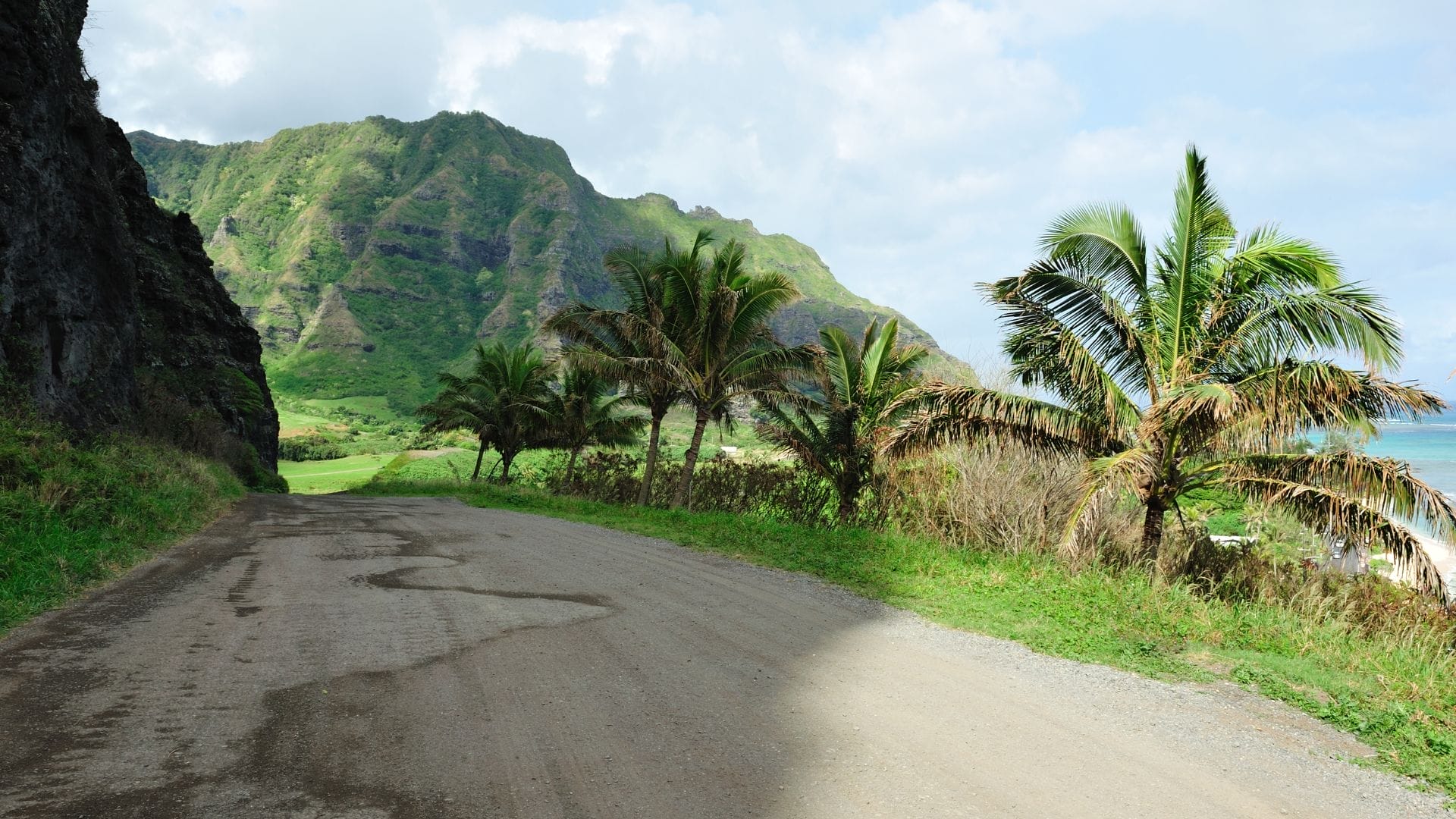
Understanding Trade Winds and Their Impact
Trade winds, a fascinating meteorological phenomenon, play a significant role in shaping the climate and lifestyle in Oahu, particularly on the windward side. But what exactly are these winds, and how do they interact with the island's environment?
Trade winds are steady and predictable air currents that flow from east to northeast near the equator.
In Oahu, these winds predominantly blow from the northeast, making the eastern (windward) side of the island cooler and more humid than the western (leeward) side. The trade winds carry moisture-laden air towards the island.
When this air hits the mountains, it rises and cools, leading to condensation and, subsequently, rainfall.
The trade winds also have a significant impact on Oahu's temperature. Despite being in the tropics, Oahu enjoys a relatively mild climate, thanks to these cooling breezes. The winds also make for excellent conditions for water sports like sailing and windsurfing.
In essence, the trade winds are not only a vital climatic feature but also an integral part of life in Oahu. They sculpt the landscape, influence the weather, and even shape the recreational activities on the island.
Key-Takeaway
Trade winds, steady air currents from the northeast, shape Oahu's climate and lifestyle. They make the windward side cooler and more humid, influence rainfall patterns, temper tropical temperatures, and create ideal conditions for water sports.
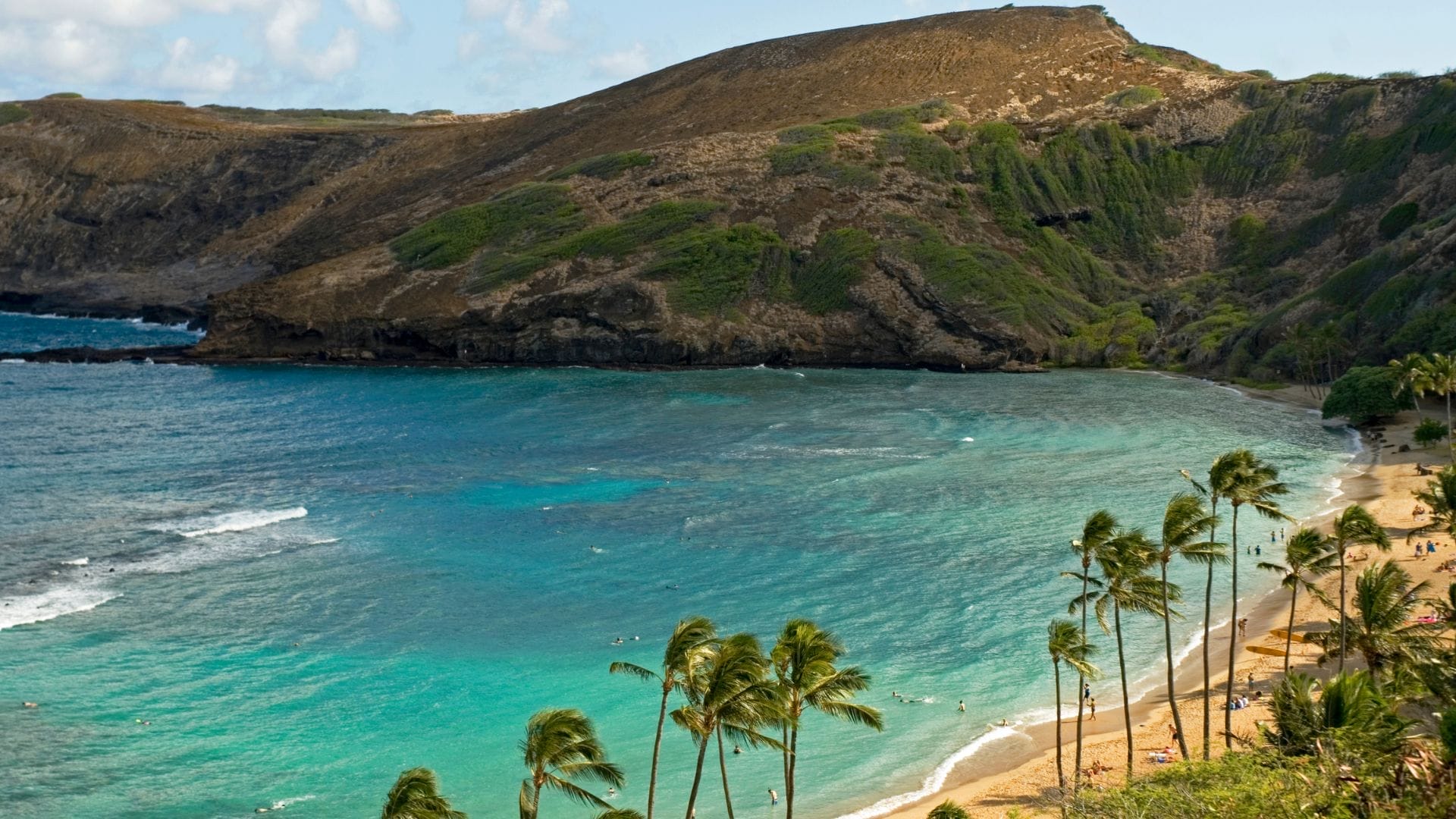
Beaches on Oahu's Windward Side
Dive into the enchanting world of Hawaii's most picturesque beaches, nestled along the windward coast.
From Hanauma Bay, a marine life conservation area and underwater park teeming with colorful fish, to Kailua Beach Park - each beach is a unique gem offering its own set of adventures.

Lanikai Beach
Lanikai Beach, located on the windward side of Oahu, is a hidden gem that lives up to its name, which translates to "heavenly sea".
This small strip of beach, spanning half a mile, is renowned for its fine, soft, white sand and crystal-clear, aqua blue waters, offering a picture-perfect Hawaiian postcard view.
Often ranked as one of the world's best beaches, Lanikai Beach is a haven for beach lovers and water sports enthusiasts. The calm, clear waters make it an excellent spot for swimming, snorkeling, and kayaking.
In fact, just off the shore, you'll find two picturesque islands, known as the Mokulua Islands, which are popular kayaking destinations.
One unique feature of Lanikai Beach is its stunning views of the sunrise. Many visitors and locals alike make the early morning trip to watch the sun peek from behind the horizon, illuminating the sky in hues of orange and pink. It's truly a sight to behold!
Key-Takeaway
Lanikai Beach, a half-mile strip on Oahu's windward side, offers soft white sand and clear blue waters. A top-ranked beach globally, it's ideal for swimming, snorkeling, kayaking, and viewing stunning sunrises.
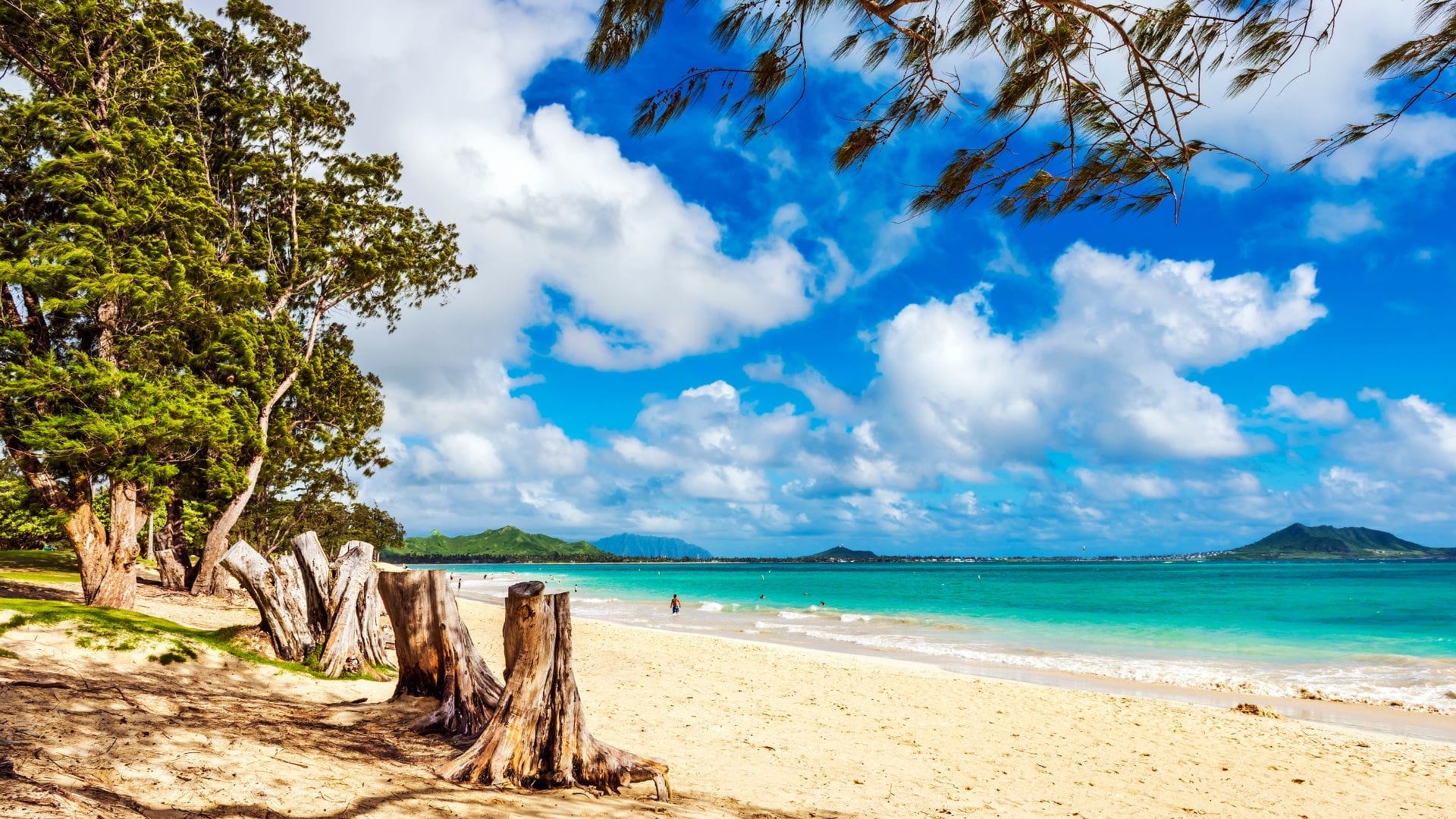
Kailua Beach Park
Located on the windward side of Oahu, Kailua Beach Park is a beloved destination for both locals and visitors alike. Spanning over 35 acres, this beach park is recognized for its stunning natural beauty, family-friendly amenities, and an array of recreational activities.
The main attraction of Kailua Beach Park is undoubtedly its beach. Stretching 2.5 miles along the coast, the beach boasts powdery white sand and turquoise blue waters, providing an idyllic setting for relaxation and water sports.
The calm and clear waters are perfect for swimming, snorkeling, and stand-up paddleboarding, while the consistent trade winds make it an ideal spot for kite surfing.
Beyond the beach, Kailua Beach Park offers a large grassy area dotted with picnic tables and barbeque pits, making it a popular spot for picnics and family gatherings.
There's also a volleyball court for those who fancy a game in the sand. Tall ironwood trees provide ample shade, while the bathroom and shower facilities add to the convenience.
Key-Takeaway
Kailua Beach Park on Oahu's windward side is a 35-acre family-friendly location with a stunning beach, perfect for water sports and relaxation. It offers picnic areas, a volleyball court, and convenient facilities.
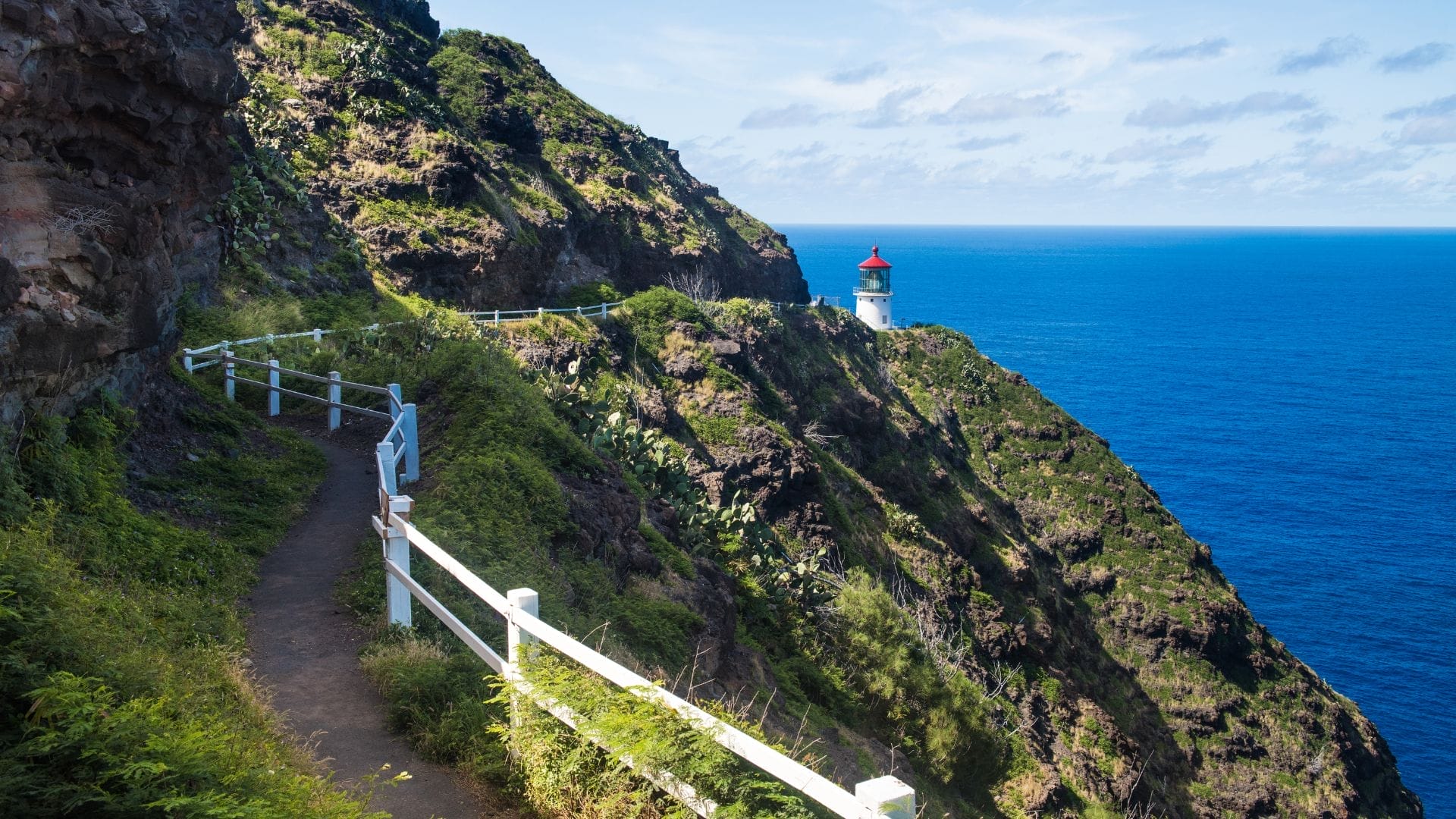
Hiking Trails on Windward Oahu
Are you up for an exciting journey?
The windward side of Oahu is home to some truly breathtaking hiking trails. For an unbeatable vista, the Makapu'u Point Lighthouse Trail should be your first choice.
This trail offers a unique perspective over Makapu'u Beach Park and beyond, making it one not to miss during your visit to windward Oahu.
Fancy a hike with stunning vistas?
Lanikai Pillbox Trail, another gem located in Kailua town, provides just that. Trek along this exhilarating path as it winds its way up towards two old military pillboxes offering magnificent views over Lanikai beach and Mokulua islands.
No matter which trail you choose, remember these hikes aren't just about reaching the end point; they're about enjoying every step along lush landscapes framed by Ko'olau Range borders.
You'll soon discover why so many people fall in love with Hawaii's natural beauty. So grab those boots from your Hawaii vacation packing list and let's get moving.
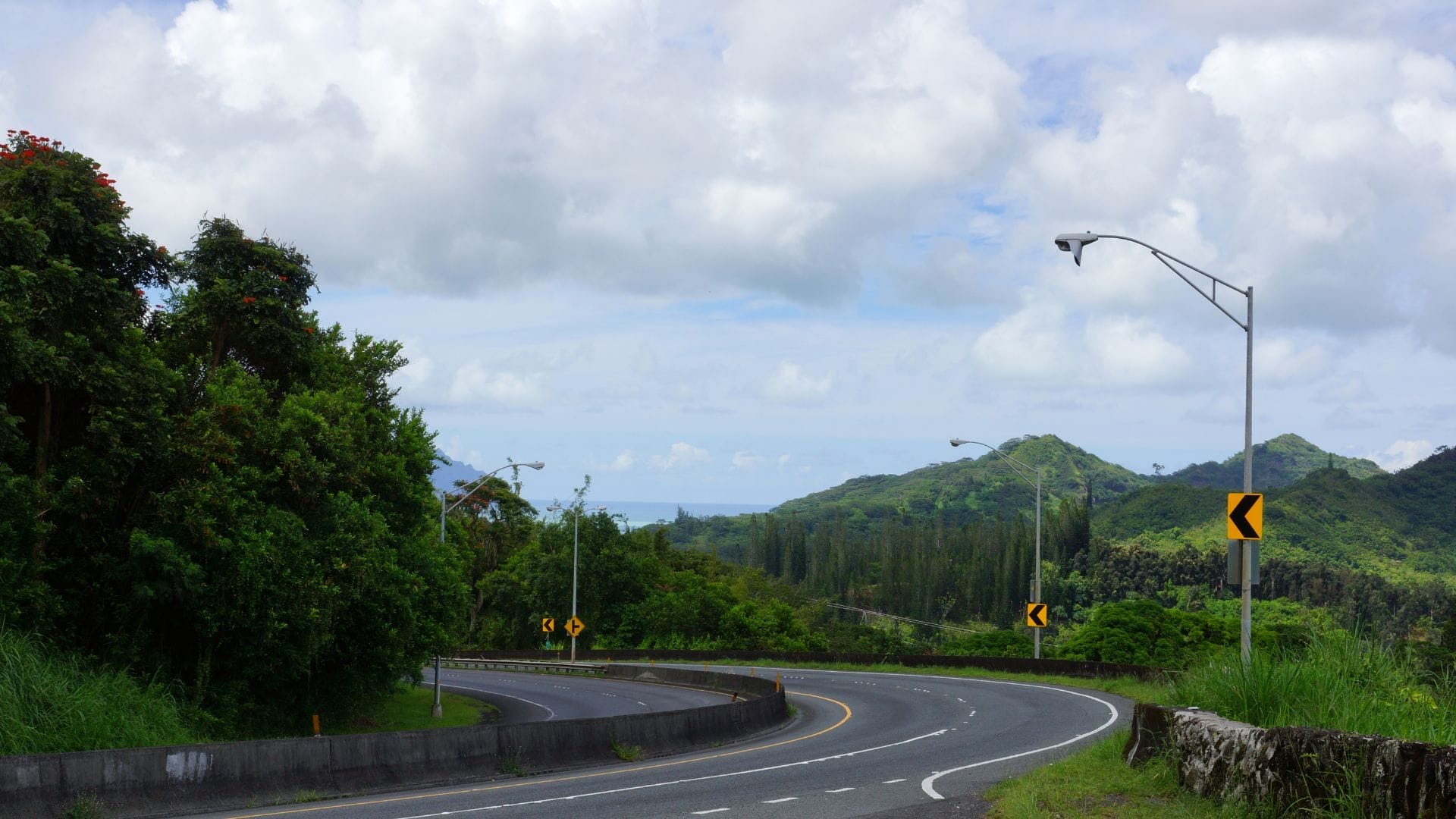
Scenic Drive along Pali Highway
If you're planning a trip to Oahu's windward side, don't miss out on the scenic drives along Pali Highway.
This highway connects Honolulu with Windward Oahu and offers breathtaking views of the Ko'olau mountain range that borders this region.

Oahu's Pali Highway - The Experience
The Pali Highway, officially known as Hawaii Route 61, is more than just a route connecting Honolulu with the windward side of Oahu. It's a scenic journey that offers spectacular views, rich history, and a unique insight into the island's natural beauty.
Stretching approximately 10.5 miles, the Pali Highway winds through the lush Nuuanu Valley before ascending the majestic Koolau Mountain Range. One of the highlights of this drive is the Nuuanu Pali Lookout, a state park perched high on the cliffside. From here, you're treated to panoramic views of the windward coast, Kaneohe Bay, and the quaint towns of Kailua and Kaneohe.
But the Pali Lookout is not just about breathtaking vistas; it's also a historical site. It was here in 1795 that King Kamehameha I won the crucial Battle of Nuuanu, which led to the unification of the Hawaiian Islands. The strong, gusty winds at the lookout add to the dramatic ambiance of this historic location.
The Pali Highway also passes through the Pali Tunnels, a pair of tunnels cut through the Koolau Range. As you emerge from the tunnels, you're greeted with a stunning view of the windward side's lush landscapes and azure waters - a sight that many describe as unforgettable.
In essence, a drive along the Pali Highway is more than just a commute; it's an experience that encapsulates the essence of Oahu, combining stunning natural beauty, significant historical landmarks, and spectacular viewpoints into one memorable journey.
Key-Takeaway
The Pali Highway, or Hawaii Route 61, is a scenic 10.5-mile route offering stunning views, historical landmarks, and insight into Oahu's natural beauty. Highlights include the Nuuanu Pali Lookout and the Pali Tunnels.

Spectacular Overlooks: Nu'uanu Pali Lookout and More.
You'll find several overlooks where travelers can stop for panoramic photos or simply soak in nature's beauty. One such spot is Nu'uanu Pali Lookout - an iconic point known for dramatic cliffside views over Windward Oahu.
Remember to add this experience to your Hawaii vacation packing list as it promises not just a journey but memories worth cherishing.
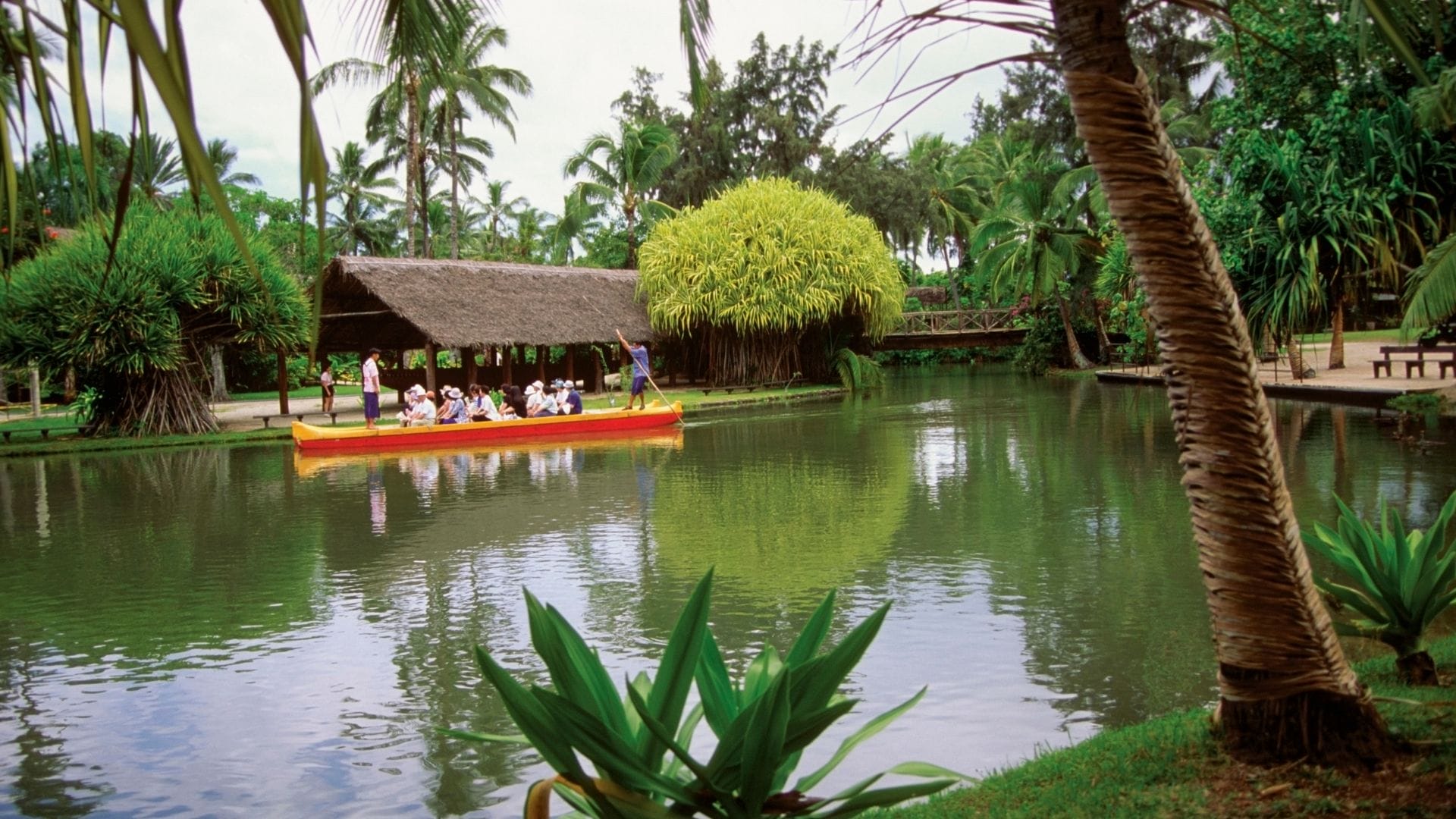
Dive Into Polynesian Traditions at The Cultural Center
The Polynesian Cultural Center (PCC) is a popular tourist attraction located in Laie, on the northern shore of Oahu, Hawaii. Spread across 42 acres, the PCC is a living museum dedicated to preserving and showcasing the culture and traditions of Polynesia.
The center features six Polynesian villages representing the island cultures of Hawaii, Fiji, Aotearoa (New Zealand), Samoa, Tahiti, and Tonga. Each village offers a unique insight into the respective culture through interactive exhibits, arts and crafts demonstrations, games, and more.
Visitors can also enjoy a lagoon that hosts daily canoe tours, an award-winning Ali'i Luau, and a spectacular evening show known as Hā: Breath of Life. The PCC is owned by the Church of Jesus Christ of Latter-day Saints and is considered one of the top attractions in Oahu.
Key-Takeaway
The Polynesian Cultural Center in Oahu is a 42-acre living museum showcasing Polynesian cultures. It features six villages, interactive exhibits, canoe tours, an award-winning luau, and a spectacular evening show.
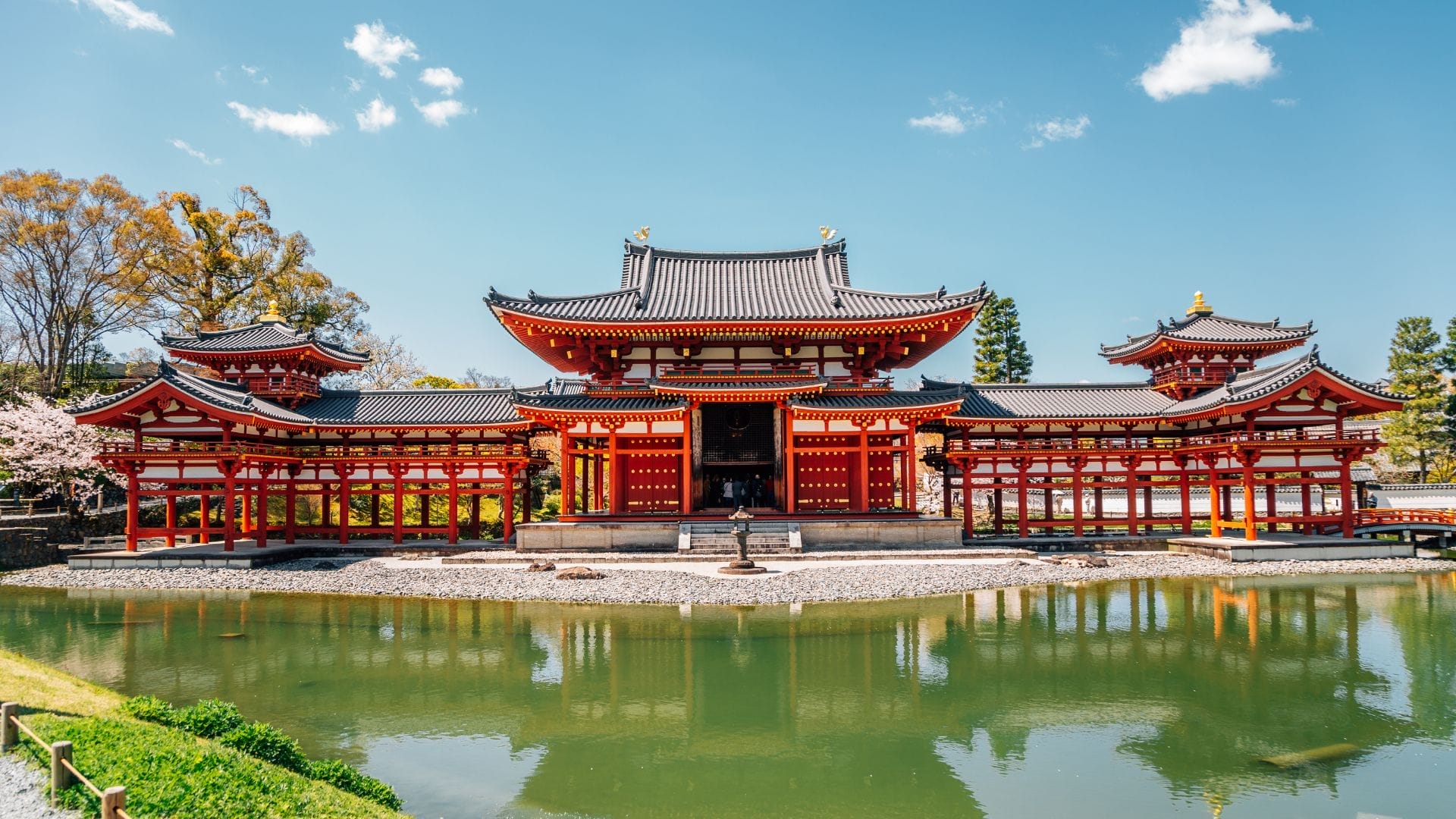
A Piece Of Japan In Hawaii: Byodo-In Temple
The Byodo-In Temple is a serene and picturesque destination nestled at the foot of the Ko'olau Mountains in the Valley of the Temples Memorial Park on Oahu, Hawaii. Established on June 7, 1968, the temple was built to commemorate the 100th anniversary of the first Japanese immigrants to Hawaii.
This non-denominational Buddhist temple is a replica of the over 950-year-old Byodo-in Temple located in Uji, Japan. The stunning structure is an example of traditional Japanese Buddhist temple architecture, complete with a koi pond, lush Japanese gardens, and wild peacocks that roam the grounds.
Inside the Byodo-In Temple sits an 18-foot gold leaf-covered Buddha, known as the Amida Buddha, which is one of the largest carved Buddhas outside of Japan. Visitors are welcomed to light incense, offer a prayer, or simply enjoy the tranquil ambiance.
The Byodo-In Temple is a place of peace and tranquility that provides visitors with a taste of Japan in Hawaii. It's an ideal spot for meditation, reflection, or just enjoying the beautiful surroundings. Despite being a popular tourist attraction, it maintains a calm and respectful environment, making it a must-visit site on Oahu.
Key-Takeaway
The Byodo-In Temple in Oahu, a replica of Japan's ancient Byodo-in Temple, commemorates the first Japanese immigrants to Hawaii. Featuring a gold leaf-covered Buddha, koi pond, and lush gardens, it offers tranquility and reflection.

Planning Your Visit to Windward Oahu
When planning a trip to the windward side of Oahu, be sure to consider your packing list for the weather conditions.
The first is your Hawaii vacation packing list.
Given the lush landscape and frequent rainfall on this part of the island, it's essential that your packing list includes items like waterproof clothing and shoes suitable for hiking trails such as Makapu'u Point Lighthouse Trail or Lanikai Pillbox trail.
After spending an adventurous day exploring Kailua Beach Park or enjoying Lanikai beach's views towards Mokulua islands, refuel with some authentic Hawaiian cuisine at local eateries around town.
Remember: The beauty of visiting Windward Oahu lies not only in its scenic landscapes but also in immersing yourself within its rich culture.
Whether you're traversing Pali Highway overlooking Ko'olau mountain range borders or engaging with Polynesian traditions at cultural centers - every moment spent here adds up to create unforgettable memories.
Key-Takeaway
When visiting windward Oahu, pack waterproof clothing and hiking shoes. Spend your day exploring scenic landscapes and engaging with rich culture, from beaches to cultural centers, creating unforgettable memories.

Conclusion:
As we conclude our exploration of Oahu's windward side, it's clear this region offers a unique blend of natural beauty, rich history, and cultural experiences.
From the soft sands of Kailua Beach Park to the panoramic views along the Pali Highway, the vibrant Polynesian traditions showcased at the Cultural Center to the tranquil beauty of the Byodo-In Temple, there's something for every traveler.
Whether you're an adventurer seeking outdoor pursuits, a history buff eager to delve into Hawaii's past, or a culture enthusiast looking to immerse in Polynesian heritage, Oahu's windward side has it all. This part of the island offers a slower pace and a more relaxed vibe compared to bustling Honolulu, allowing visitors to truly absorb the essence of Hawaii.
The windward side of Oahu is more than just a destination; it's a stepping stone into the heart of Hawaii's diverse and captivating culture. So here's to sun-soaked beaches, lush mountains, fascinating culture, and unforgettable memories!
Frequently Asked Questions
The windward side of Oahu refers to the eastern coast that faces prevailing trade winds. It's known for its lush landscapes, stunning beaches, and abundant rainfall.
The windward side of Oahu faces east towards incoming trade winds, resulting in a wetter climate. The leeward side lies west, sheltered from these winds, typically experiencing drier conditions.
Towns on the Windward Side include Kailua, Kaneohe, Waimanalo Beach among others offering unique Hawaiian charm with their local shops and eateries.
The Windward side is absolutely worth a visit. The lush green mountains and crystal-clear waters of the beaches will leave you breathless.
You can take a hike to the top of the Ko'olau mountains, take a dip in the turquoise waters of Lanikai Beach, and even visit a shrimp truck for some delicious local cuisine! Don't miss out on all the Windward side has to offer.
Yes, the windward side in Oahu is indeed windy.
However, it's a refreshing, cool breeze that will keep you feeling comfortable while you explore the lush greenery and stunning beaches that line the eastern coast of the island.
Real Hawaii Tours
Free Oahu E-Guide




